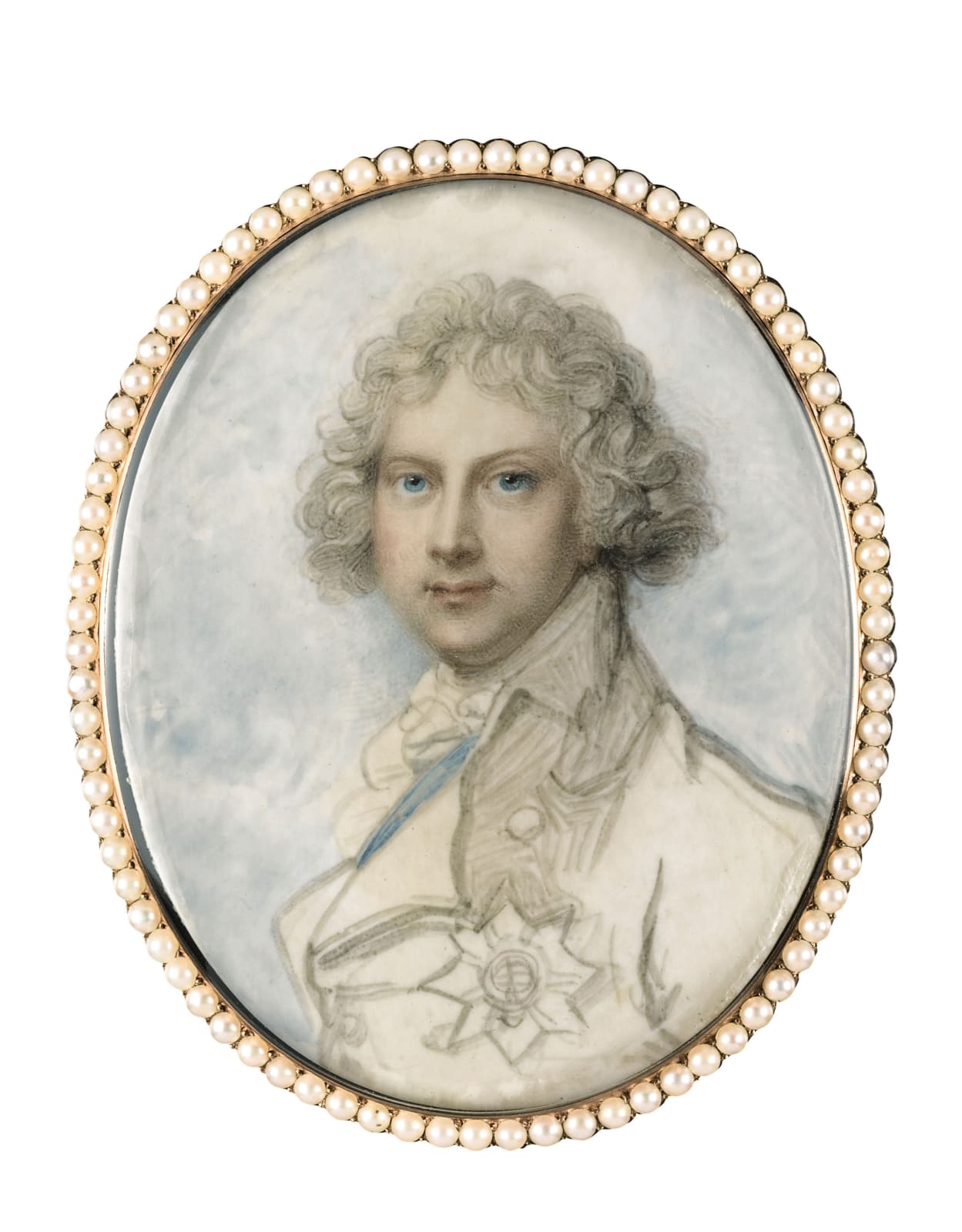
Richard Cosway
Portrait miniature of George, Prince of Wales (1762-1830), later King George IV, c. 1783
Watercolour on ivory
95mm x 75mm
Philip Mould & Co.
To view all current artworks for sale visit philipmould.com This exciting and vibrant portrait miniature offers a fascinating insight into the working practices of Richard Cosway and his close relationship...
To
view all current artworks for sale visit philipmould.com
This exciting and vibrant portrait miniature offers a fascinating insight into the working practices of Richard Cosway and his close relationship with the Prince Regent. The present miniature, dating from circa 1783, is one of the earliest portraits painted by Cosway of the Prince and pre-dates his official appointment. The ivory is unusually large for the period, when it would have been a technical challenge to cut such a large piece for the tusk and it is possible that Cosway was attempting to impress the Prince. It was perhaps the over-ambitious nature of the portrait which led to its unfinished state. On the other hand, Cosway has very much treated the miniature in the same way as his portrait drawings, with sketchy details for the costume and a detailed rendering of the face. It is possible that the miniature was left deliberately unfinished, lending an immediacy and intimacy to the portrait. Stylistically, the portrait dates to Cosway’s most fluid, unrestrained and artistically exciting period. The confident, but loose, handling of the watercolour on ivory and his restricted palette place this miniature amongst the most aesthetically pleasing of his works.
view all current artworks for sale visit philipmould.com
This exciting and vibrant portrait miniature offers a fascinating insight into the working practices of Richard Cosway and his close relationship with the Prince Regent. The present miniature, dating from circa 1783, is one of the earliest portraits painted by Cosway of the Prince and pre-dates his official appointment. The ivory is unusually large for the period, when it would have been a technical challenge to cut such a large piece for the tusk and it is possible that Cosway was attempting to impress the Prince. It was perhaps the over-ambitious nature of the portrait which led to its unfinished state. On the other hand, Cosway has very much treated the miniature in the same way as his portrait drawings, with sketchy details for the costume and a detailed rendering of the face. It is possible that the miniature was left deliberately unfinished, lending an immediacy and intimacy to the portrait. Stylistically, the portrait dates to Cosway’s most fluid, unrestrained and artistically exciting period. The confident, but loose, handling of the watercolour on ivory and his restricted palette place this miniature amongst the most aesthetically pleasing of his works.
Provenance
Hans Freiherr von Reitzes, ViennaEdward M. Hodgkins, London
Greta S. Heckett, Pittsburgh, Christie's, 11 July 1977, lot 180
Exhibitions
Vienna, Albertina, Internationale Miniaturen-Austellung, 1924, cat.no. 167Pittsburgh, Carnegie Institute, Four Centuries of Portrait Miniatures from the Heckett Collection, 1954, cat. No. 8
Literature
de J. Bourgoing, English Miniatures, London, 1928, pl.30R. Walker, Miniatures in the Collection of Her Majesty the Queen: the Eighteenth and Nineteenth Centuries, Cambridge, 1992, p.88